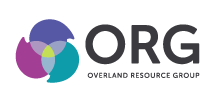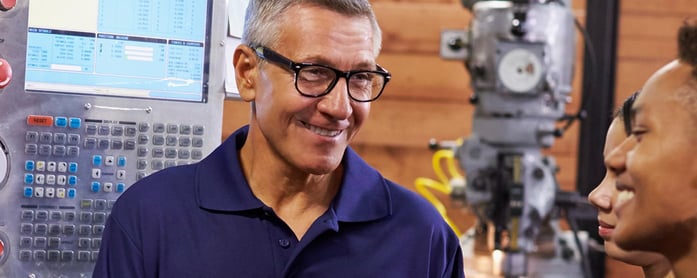SATISFACTION MATTERS
“I love my job and work hard every day because I’m treated poorly.” Said no employee, ever.
Fairness. Trust. Dignity. Most people would agree that these three things are reasonable expectations for employees. And yet, a recent CBS News report* cites that 51% of Americans are dissatisfied with their jobs.
Unfairness and injustice are unfortunate realities in many organizations. When employees complain, it is waved away. Dysfunction is written off as normal, “just the way it is.” Processes are inconsistent and unstructured. Outcomes (rewards, opportunities, etc.) may be unpredictable or handled differently for different people.
These factors may fan the flames of discord, often creating widespread organizational conflict which can result in an apathetic, unsatisfied workforce. Frustration due to unfair processes, policies, or outcomes may cause individuals to stop performing well. Dissatisfaction hinders productivity and ultimately effects the bottom line.
What’s the answer? Whether the issue is perceived or real, people want to be heard. If there is a pervasive sense of injustice or perception of unfair treatment and favoritism, it needs to be addressed rather than ignored.
The Hints Of Conflict And Dissatisfaction May Be Subtle. Watch For These Warning Signs:
- People aren’t forthcoming and avoid participating in the meeting
- Employees look at the floor instead of you or each other
- No one is communicating
- There’s a sense of tension in the room
- Team members look uncomfortable
- Development of cliques
If you tried to improve engagement and didn’t get a good response, unfairness might be the underlying issue. It’s time to ask for input and discuss the elephant in the room.
During discussion, if you propose a resolution, keep it positive. Remember that you may get unexpected responses out of people, so be flexible if you don’t get the outcome or excitement you anticipated. You might even notice people responding as if they are oppressed. Ask yourself: Am I giving equal time to people? Am I treating them fairly?
Begin With Fairness
It’s important for employees to identify with their job, peers, and team. Satisfaction is the first stepping-stone on the quest to increase employee commitment and achieve exceptional performance. Process and Outcome Fairness are two critical factors that drive satisfaction.
Ignoring basic human dignity is a fundamental violation. Seeking positive ways to restore fairness, trust, and dignity is fundamental for a company to drive towards every day in order to achieve exceptional (and sustainable) performance.
TWO KINDS OF FAIRNESS
Process fairness
GOAL: Employees feel policies and procedures are transparent, fair, and just. Corporate strategy is clearly communicated to all employees.
Employees ask themselves if policies and procedures are:
- Clear, accurate, and easy to understand
- Administered consistently and fairly
- Enforced by people who are neutral and unbiased
- Open to participation, representation, and/or appeal
Outcome Fairness
GOAL: Employees feel their organization distributes rewards, resources, disciplinary action, and opportunities consistently, fairly, and appropriately.
Employees ask themselves:
- Are resources distributed fairly?
- Are rewards and consequences distributed fairly?
- Am I given a fair shot for promotions and other opportunities?
- Do decisions seem reasonable?
- Are explanations believable?
How do you think your employees would answer these questions?
READING THE ROOM
Leaders should know when conflict is afoot if they are in touch with their teams. It’s important to take your employees’ pulse periodically. If you’re not paying close attention, you may miss the cues. Ironically, many settle into a don’t-rock-the-boat mentality, never realizing that the boat they’re on has been rocking for quite some time. It’s easier to become desensitized or oblivious to an unhealthy environment than you might think.
What Does It Look Like?
Satisfaction may be difficult to detect, so you may have to come right out and ask employees to share their perception of the workplace. Satisfied employees tend to treat others fairly, stand up for each other, and give each other credit.
After taking intentional steps toward fairness, reaffirm your commitment:
- Ask Employees: Do you feel heard? Were you treated fairly?
- Remind Leadership: What we do matters. This will work. We will see a return on this investment.
- Ensure Transparency: Connect the dots with clear steps between the process and the outcome.
Satisfied Employee:
“It’s been made clear to me that I matter as much as everyone else matters.”
Satisfied Team:
“We have a voice and an opportunity to influence outcomes.”
Satisfied Leader:
“I’ve created a fair and dignified work environment where employees can and want to be part of making our organization successful.”
SATISFACTION IS FOUNDATIONAL
If your employees don’t seem to be performing up to your expectations, resist the temptation to try increasing engagement. This is putting the cart before the horse.
Remember, before any other improvements are made, you need a solid foundation. Employee satisfaction is the building block of everything to come.
Looking to improve engagement, commitment, and productivity?
Begin with satisfaction. Focus on communication, input and collaboration in decision-making. If you get this right, it will create a culture of fairness and trust. From there, you are in a great position to move into the next levels of employee commitment.
Is your organization dealing with conflict and dissatisfaction?
We can help. Contact ORG today.
*https://www.cbsnews.com/news/why-so-many-americans-hate-their-jobs/



